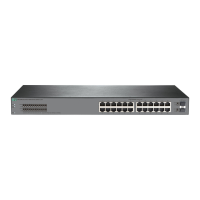201
Some security features, such as IP source guard, use DHCPv6 relay entries to check incoming
packets and block packets that do not match any entry. Hosts using manually configured IPv6
addresses are denied to access external networks through the relay agent. For more information
about IP source guard, see Security Configuration Guide.
Procedure
1. Enter system view.
system-view
2. Enter interface view.
interface interface-type interface-number
3. Enable the recording of DHCPv6 relay entries.
ipv6 dhcp relay client-information record
By default, the DHCPv6 relay agent does not record relay entries.
Enabling IPv6 release notification
About IPv6 release notification
This feature enables the DHCPv6 relay agent to send a Release message to the DHCPv6 server
after it deletes a DHCPv6 relay entry. After the DHCPv6 server receives the message, it reclaims the
IPv6 address or prefix and marks the lease as expired.
If you do not enable this feature, the DHCPv6 relay agent will not send a Release message after it
deletes a relay entry.
Procedure
1. Enter system view.
system-view
2. Enter interface view.
interface interface-type interface-number
3. Enable IPv6 release notification.
ipv6 dhcp relay release-agent
By default, IPv6 release notification is disabled.
Enabling client offline detection
About client offline detection
This feature enables the DHCPv6 relay agent to detect the status of ND entries. After an ND entry
ages out, the DHCPv6 relay agent considers the client offline and deletes the relay entry for the client.
For more information about ND, see "Configuring basic IPv6 settings."
Procedure
1. Enter system view.
system-view
2. Enter interface view.
interface interface-type interface-number
3. Enable client offline detection.
ipv6 dhcp client-detect
By default, client offline detection is disabled.

